This Lush Island Is the Birthplace of Polynesian Culture — and Has One of the World's Rarest Flowers, Epic Snorkelling, and a Lagoon with Crystal Clear Waters
Here's everything you need to know about visiting the French Polynesian island of Ra'iātea.
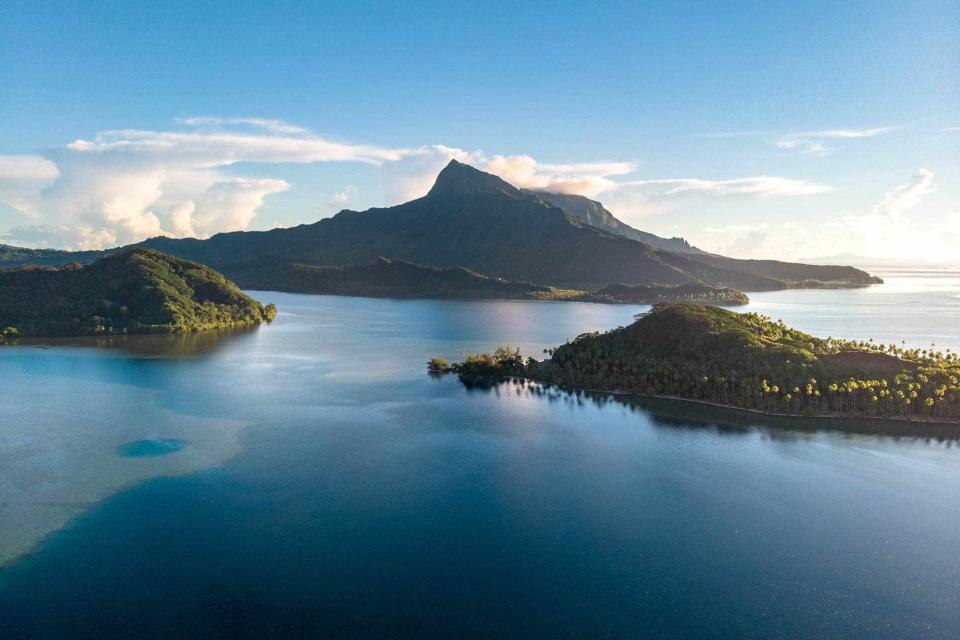
SteÌphane Mailion Photography/Courtesy of Tahiti Tourisme
As the small motorboat made its way across the calm lagoon from Taha'a and the palm-fringed coastline of Ra'iātea, the towering mountain peaks in all their lushness and ruggedness overwhelmed my view. I started to wonder if this is what ancient Polynesians saw over 1,000 years ago when they spotted the island after weeks of navigating the Pacific Ocean in their two-hulled canoes.
As the first populated island in French Polynesia, Ra'iātea holds a special meaning in Polynesian history. If its monikers — the "sacred island" and "the birthplace of Polynesia" — are not enough to convince you, its original name was Havai'i Nui, after the mythic Hawaiki. (In Polynesian mythology, Hawaiki is the original homeland of all Polynesian people and in Māori culture, it is also the place where the soul of the deceased returns.)
Ra'iātea, which in Tahitian means "sky with soft light," was the cradle of Polynesian cultural and political life. It is where voyagers began settling expeditions to New Zealand, Hawai'i, and other Polynesian islands.
Because of that, nowadays, Ra'iātea is a dream for history and anthropology enthusiasts as ancient marae (temples) and petroglyph fields dot the island.
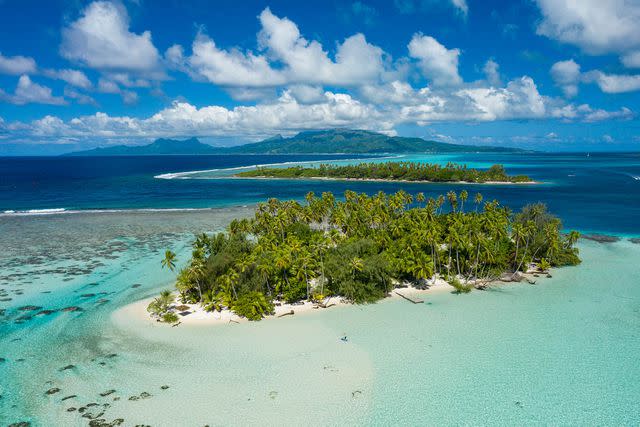
Emmanuel Bouvet/Courtesy of Tahiti Tourisme
Ra'iātea, together with neighboring Taha'a, are part of the Society Islands archipelago, located northwest of Tahiti, and are often thought of as "sister islands" because they are part of the same volcanic complex and share a picture-perfect aquamarine-hued lagoon as well as a fringe barrier reef that encloses them together.
And while Taha'a attracts tourists with its black pearl farms and vanilla plantations, Ra'iātea beckons hikers, adventurers, couples, water sports, and wellness enthusiasts with an incredible variety of outdoor activities and sights. It is where visitors can still experience an authentic side of Polynesia — one that is not overrun by flashy boutiques, luxury resorts, or Instagram-famous landmarks.
Because of that, the island lacks the crowds — or the hefty price tags — of other spots like its more famous neighbor Bora Bora (the island is a short 20-minute plane ride from here and visible from Ra'iātea's shore), and that includes accommodation options running the gamut from small, family-owned lodges, secluded hotels, to, for those who want to splurge, an entire private island.
Read on for a complete guide on how to plan and make the most out of your stay on Polynesia's sacred island.
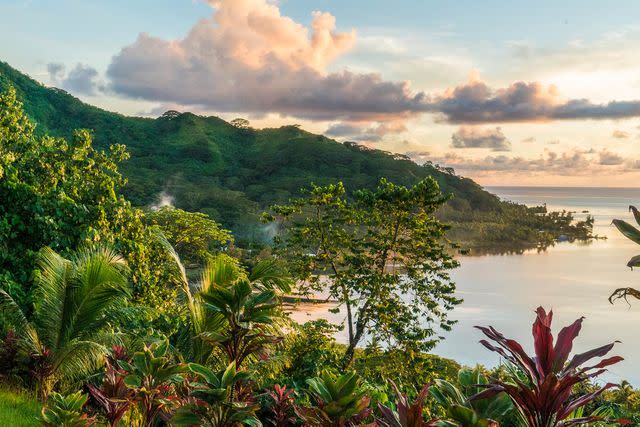
Audrey Svoboda/Courtesy of Tahiti Tourisme
How to Get There
Ra'iātea is the second-largest island in the Society Archipelago. It has a good infrastructure that connects it to neighboring islands as well as Tahiti and Mo'orea. Air Moana, French Polynesia's domestic airline, has several weekly flights from Bora Bora and daily flights from Tahiti's Faa'a Airport, while Air Tahiti has even more direct flights from Tahiti to Ra'iātea. The flight from Tahiti takes about 45 minutes and from Bora Bora it's just 20 minutes.
You can also board Apetahi Express, Tahiti's inter-island ferry, which will take you from Pape'ete, Tahiti's capital, to Ra'iātea in five hours. This route is available three times a week — Wednesday, Friday, and Sunday — while the return trip from Ra'iātea to Tahiti is available Monday, Thursday, and Saturday.
And if you are on Bora Bora, Maupiti Express operates three weekly ferry services (Monday, Friday, and Sunday) to Taha'a and Ra'iātea.
How to Get Around
The easiest, fastest, and most convenient way to get around Ra'iātea is by car. You can rent a vehicle at the airport or Uturoa, Ra'iātea's largest town. While the island's main road that circumnavigates it is in excellent condition, if you plan to venture out in the valleys, we recommend you opt for a four-wheel vehicle more suitable for dirt roads.
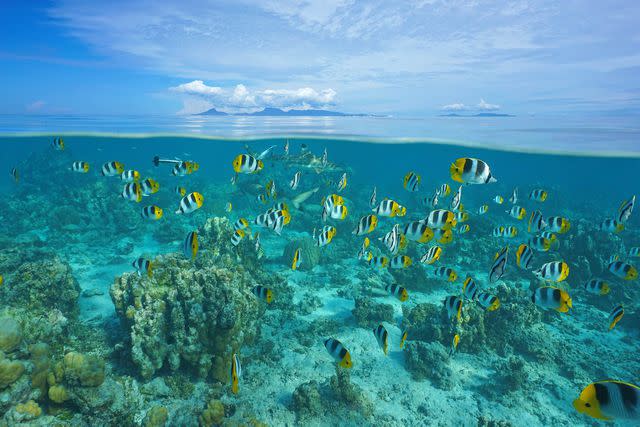
Damocean/Getty Images
Best Things to Do
Ra'iātea offers an abundance of outdoor activities — both on land and in the ocean — some of which you won't find anywhere else in the world.
Mount Temehani
If you are an experienced hiker with a penchant for scenic panoramas and mysterious blooms, then book a guided hike to Mount Temehani. At over 2,532 feet, this mountain offers impressive vistas of Bora Bora and Taha'a.
But it has gained notoriety for a curious reason: it is the only place on Earth where the fragrant flower tiare apetahi grows. The delicate bloom has a distinct look, with only five petals arranged on one side. Many have tried to cultivate it elsewhere but have failed, and scientists have yet to discover what makes the conditions on Mount Temehani so favorable for tiare apetahi. (It usually grows above 1,640 feet.) The hike takes about 5.5 hours one way and passes through rocky terrain and thick forests.
Niu Shack
After a day of hiking, the best way to unwind and relax your muscles is to treat your mind and body with a wellness afternoon (or, even better, make it a full day) at Niu Shack. This one-of-a-kind "guest house" is owned and managed by Ra'iātea-natives Vicky and her daughter Eva, who have built their off-the-grid property in a lush valley a little over half a mile from the main road.
And while its remote location might prove a little challenging to get to, it is also what makes Niu Shack such a perfect spot for a wellness sanctuary. (Note that Eva will gladly pick you up from a designated makeshift parking zone.)
Stepping onto the property feels like entering the Garden of Eden, with fragrant tropical flowers, medicinal plants, fruits, and vegetables growing everywhere you look. The soundtrack of Niu Shack consists of the gentle swoosh of leaves and the burble of the nearby river, which forms a pool-like swimming hole just underneath the property. This is where Eva will take you for a cool dip and an all-natural body scrub session made with freshly grated coconut, sea salt, and monoi oil.
Then, Vicky will cook up the freshest and most delicious vegan meal with many ingredients sourced straight from her garden. Enjoy a sound bath or a yoga class before a relaxing massage in an open thatched-roof structure sitting just above the river.
Taputapuātea Marae
You'll find the largest and most important religious site in Polynesia at the edge of a beautiful lagoon in the southeast of Ra'iātea. The Taputapuātea complex, which has been a UNESCO World Heritage Site since 2017, consists of multiple open-air temples, including one of the same name, that served as a gathering point for chiefs and priests for important cultural rituals, political discussions, or to launch voyaging expeditions. The Taputapuātea marae is at the center of the Polynesian Triangle that comprises Hawaii to the North, Easter Island (or Rapa Nui) to the East, and New Zealand (Aotearoa in the Māori language), and was dedicated to the god of war Oro.
We recommend you book a site tour with a local guide who can tell you more about its history and significance and advise you on proper etiquette and rules when visiting this or other marae.
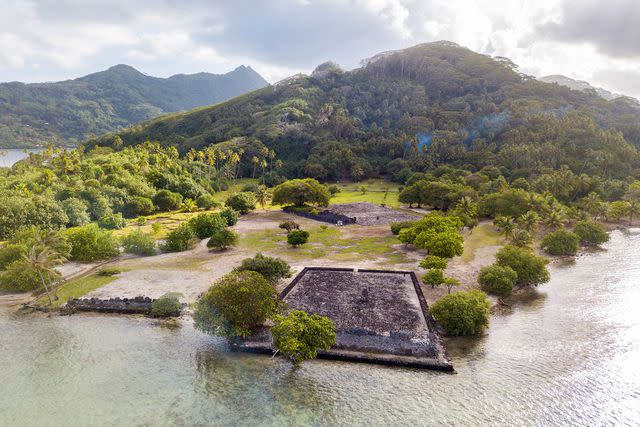
Dmitry Malov/Getty Images
Uturoa's Market
As the administrative center and home of Ra'iātea's airport and port, Uturoa is the gateway to the island. Here, you'll find several grocery stores, coffee shops, a bakery, and a waterfront plaza with businesses. There's also a bustling market where locals sell the freshest catch of the day, local tropical fruits and flowers, clothing (make sure you leave with a hand-dyed pareo), and accessories.
Snorkelling and Island Hopping
The lagoon between Ra'iātea and Taha'a is dotted with small islands (or motu in Tahitian) — and many of them are publicly accessible, as water taxis are widely available. This is where you'll find white-sand beaches and shallow waters bustling with colorful marine life.
Motu Ofetaro is one of the most popular and easy to access — about five minutes by boat or 25 minutes by kayak. The picture-perfect islet has bathroom facilities and picnic tables and is frequented by locals and visitors alike.
Another spot is Motu Iriru, across from Taputapuātea. Swaying palms, calm and relatively shallow turquoise waters, and kid-friendly facilities have made it a favorite of families with small children. And if you're staying in the western part of the island, consider kayaking to Motu Miri Miri. You'll only have to paddle for about 15 minutes to get to this heavenly swathe of lush land, and you'll be rewarded with beautiful vistas of Bora Bora in the distance.
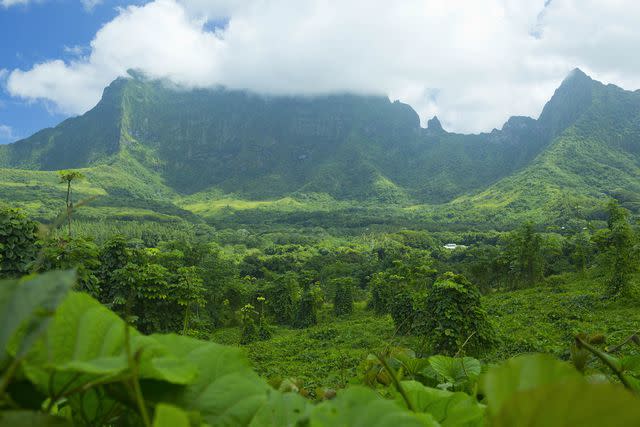
Courtesy of Tahiti Tourisme
Faaroa River
On the island's east side, the Faaroa River is the only navigable river in French Polynesia that snakes through a lush forest and can be toured in a kayak or a standup paddleboard. A local guide will help you safely navigate the roughly five-mile-long river and learn more about the flora and fauna you see along the way.
Best Hotels and Resorts
Unlike neighboring Bora Bora, known for its luxury over-water bungalows popular with honeymooners, Ra'iātea's accommodation options are much more laid-back, often for a fraction of the price. You can also find many homes for rent on Airbnb, with rates starting from under $100 per night.
Raiatea Lodge Hotel
If convenience is a top priority, consider the recently renovated Raiatea Lodge Hotel, just a short drive from the island's airport and main town. However, don't think of this serene property as an "airport hotel." Nestled on 2.5 lush tropical acres, teeming with flowers and coconut palms, the property comprises a main building painted in a soft pastel aquamarine hue, which houses the hotel's guest rooms and a two-bedroom family suite, a restaurant, and a bar. Seven stand-alone bungalows with private patios and spectacular views of Bora Bora are nearby and also available to book.
Opoa Hotel
Tucked away on the southeast end of the island, Opoa Beach Hotel is a secluded waterfront property backed by lush mountain vistas. There are only 10 spacious bungalows, each with bright, white-washed living rooms and patios equipped with chaise lounges and hammocks. This is an excellent choice for couples or travelers seeking complete privacy. While there is a small swimming pool on-site, you'll find yourself soaking up Vitamin D on the private beach in front of the hotel before jumping in the water from the boat deck.
The hotel's restaurant and beach bar epitomize laid-back elegance and offer a fusion of French and Polynesian flavors prepared with the freshest island ingredients.
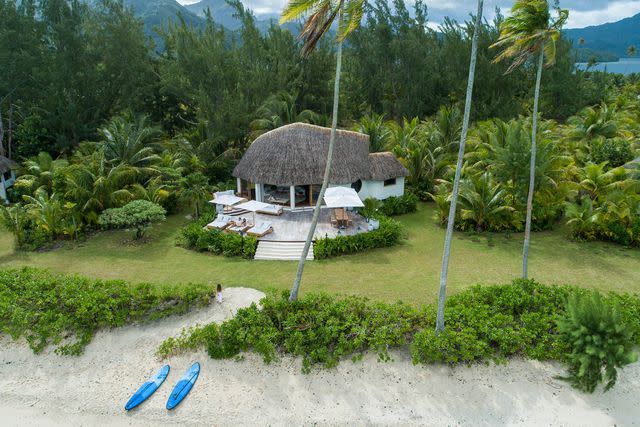
Courtesy of Motu Nao Nao
Motu Nao Nao
Ra'iātea may be a backpacker's paradise, but that doesn't mean the island lacks luxury accommodations. Motu Nao Nao allows guests to enjoy one of Ra'iātea's many islets in complete privacy. The property quietly opened in 2021 and features three spacious thatched-roof villas overlooking the ocean. Travelers are pampered with freshly prepared meals by chef extraordinaire Wilfrid Kobylt, who excels in showcasing local ingredients in a sophisticated way, and a list of activities that span snorkeling (there's a reef just off of the island), sailing on a traditional two-hulled canoe, or kite surfing. However, the most memorable activity is an evening of traditional Tahitian dances and songs performed by a local troupe that takes place at the western tip of the island at sundown.
Best Restaurants
Fish&Blue
Arguably the finest eatery on the island, this beachfront spot has indoor and outdoor seating. The latter is especially charming, as tables are sitting directly on a white-sand beach, and depending on the tide, your feet might even be in the water. The restaurant treats patrons to breathtaking sunset views and a menu where the highlight, as its name suggests, is the fresh seafood.
Villa Ixora
Villa Ixora is a family-owned boutique hotel with an excellent restaurant, welcoming guests for lunch and dinner. The simple, open-air dining room overlooks the property's garden and is the perfect setting for French chef Terence Trouyet's elegantly presented dishes that blend Mediterranean and local flavors.
For more Travel & Leisure news, make sure to sign up for our newsletter!
Read the original article on Travel & Leisure.

